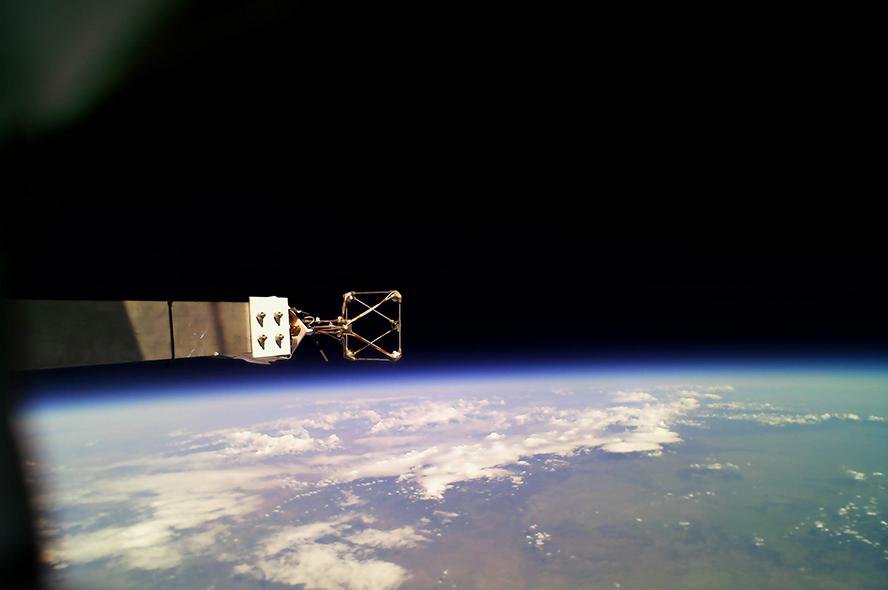Sonic anemometer takes flight

By Cansu Birsen, E25
Researchers from Tufts University, NASA, and Cornell University recently published a new paper in the Journal of Atmospheric and Ocean Technology on the development of a digital sonic anemometer designed to measure wind velocity in extreme low-pressure environments. This technology has the potential to advance research on high-altitude balloon navigation, atmospheric gravity waves, solar activity research, and even planetary science for missions to Mars, Venus, or Saturn.
The research team flew the anemometer on NASA’s SPARROW-3 balloon flight from Fort Sumner, New Mexico, in August 2022. The system operated successfully in the harsh conditions of the stratosphere, recording wind data at temperatures as low as -40°C and at an altitude of 38 km, where atmospheric pressure drops to just 3.8 millibars (by comparison, the average atmospheric pressure at sea level on Earth is 1000 millibars).
During that test, the anemometer was able to detect very small changes in wind speed, down to 0.1 meters per second, while taking three-dimensional measurements every 2.25 seconds. The anemometer surpassed the performance of all previous sonic anemometers regarding altitude; however, while two of the three measurement axes performed well, one struggled at altitudes above 32 kilometers, presenting validation challenges. The research team intends to address this issue in future iterations of the device, and to improve resolution and sampling rates to capture more accurate wind data.
The research team includes three members of the Tufts Department of Mechanical Engineering: PhD student Tim Cheng, alum Tara Curran, E22, E23, Associate Professor Robert White, and alum Friedlay Steve, E23, who is now pursuing an MS in Innovation and Management at Tufts Gordon Institute. Aerospace engineer Chris Yoder at NASA Wallops Flight Facility and senior visiting scientist Don Banfield at Cornell University also collaborated on the research.
The project builds on prior work by members of the team. Associate Professor Robert White’s research interests in microelectromechanical systems and atmospheric sensors have previously led to innovations in the development of a sonic anemometer that could measure wind speed on Mars, in a collaboration with Don Banfield and colleagues from VN Instruments. This latest effort in aerodynamic measurement could one day further that goal of exploring Mars, and holds potential applications for targets like Earth’s stratosphere, the upper atmosphere of Venus, or even a modified instrument to study gas composition on Saturn.
Read the full paper in the Journal of Atmospheric and Ocean Technology to learn more.
Department:
Mechanical Engineering , Engineering Management, Innovation, and Entrepreneurship (Gordon Institute)